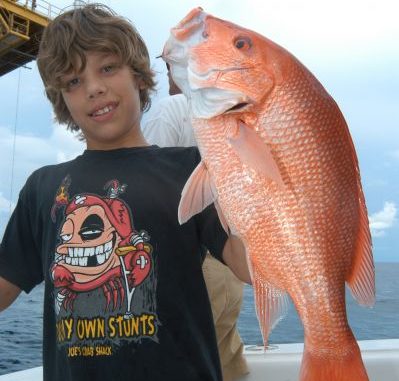
172-day season will reach state’s 745,000-pound share of harvest, LDWF says
Recreational anglers in Louisiana’s waters will reach their share — 745,000 pounds — of the Gulf’s red snapper harvest when the season closes in state waters at 12:01 a.m on Sept. 8, according to a news release from the Louisiana Department of Wildlife and Fisheries.
LA Creel, the state’s recreational landings data program that replaced unreliable estimates from the Marine Recreational Information Program, indicates the state’s 18-percent share of Gulf red snapper will be reached when the 172-day season concludes shortly after midnight on Sept. 8.
“In Louisiana, our anglers and staff are committed to providing the best data possible on our fisheries. Because of this, we’re able to be fully accountable for the amount of red snapper our anglers harvest and responsibly manage our recreational fishing seasons,” Robert Barham, secretary of LDWF said. “Most of all, we’re able to maximize our anglers’ opportunities to get out on the water and fish red snapper, providing our private anglers 172 red snapper fishing days during this state season.”
But the release also states that federally-permitted charter captains in Louisiana only harvested 64 percent of their historic landings estimate, or 215,000 pounds. Federally permitted captains are not allowed to fish in the state season, and can only fish during the federal snapper season, which ran from June 1 through July 15.
Observed landings from federally-permitted captains in Louisiana resulted in about 215,000 pounds, meaning about 123,000 pounds of red snapper were not caught.
“The benefits our private anglers enjoyed in 2015 did not extend to our entire recreational fishing industry because the charter sector was shut down before they could harvest their share of the total Gulf of Mexico recreational red snapper harvest,” Randy Pausina, head of fisheries for LDWF said. “Louisiana’s federally-permitted charter captains were allocated 338,000 pounds and given a 45-day season. During that season they were only able to land 215,000 pounds, leaving 123,000 pounds on the table.
“This resulted in lost opportunities for our charter captains due to NOAA Fisheries’ inability to monitor landings in real-time during the season and appropriately manage the fishery. We’ll continue to do whatever we can to improve how this fishery operates, but until LDWF has the full authority to manage this fishery, private anglers and charter businesses will continue to suffer.”


